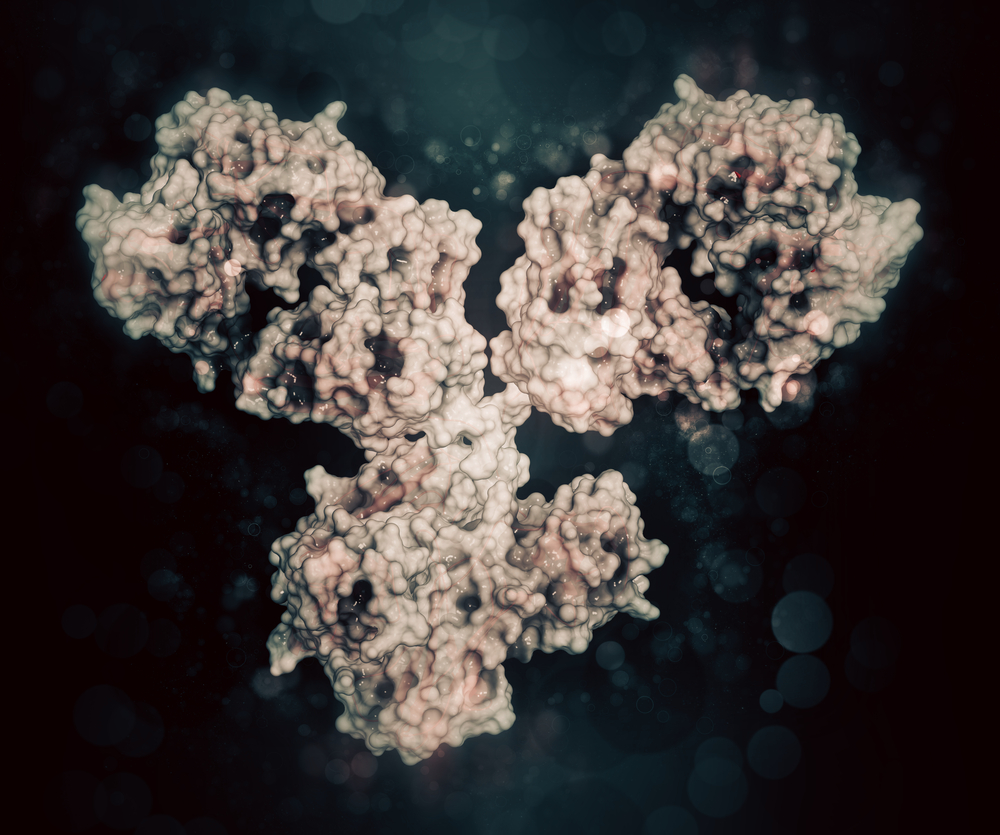MOUSE ANTI-HANTAVIRUS NUCLEOCAPSID PROTEIN ANTIBODY (4956)
Mouse anti Hantavirus nucleocapsid protein antibody recognises Hantavirus nucleocapsid protein. The Hantavirus nucleocapsid protein antibody is specific for nucleocapsid protein of Hantavirus strains Hantaan, Dobrava, Seoul and Saaremaa.
PRODUCT DETAILS – MOUSE ANTI-HANTAVIRUS NUCLEOCAPSID PROTEIN ANTIBODY (4956)
- Mouse anti-Hantavirus Nucleocapsid IgG1 monoclonal antibody (strains Hantaan, Dobrava, Seoul; clone 4956).
- Greater than 90% purity and buffered in PBS, pH7.2.
BACKGROUND
Hantaviruses (HTNV) belong to the Hantavirus genus within the family Bunyaviridae. The Hantavirus genome has three segments of single stranded negative sense RNA, which are named based on size as small (S), medium (M) and large (L). The L segment encodes viral polymerase, the M segment encodes the precursor (GPC) for two viral surface glycoproteins (Gn and Gc), and the S segment encodes the nucleocapsid (N) protein. The N protein is reported to be highly conserved in Hantaviruses. It plays a pivotal role in viral replication, transcription and assembly. N protein may also play a role in enabling the virus to replicate within host cells (Muyangwa, M).
Hantaviruses are zoonotic pathogens that have global distribution. Rodents and small mammals act as natural reservoirs for Hantaviruses but remain asymptomatic after infection. Airborne transmission of hantaviruses to humans occurs via inhalation of dust or aerosols contaminated by urine, saliva or droppings from infected animals. Cases of hantavirus infection are sporadic and predominantly occur in rural areas where rodents are prevalent. Individuals working with rodents are potentially at risk of becoming infected with Hantavirus.
In humans, hantaviruses cause two acute febrile disease syndromes, haemorrhagic fever with renal syndrome (HFRS) and hantavirus cardiopulmonary syndrome (HCPS). HFRS and HCPS are caused by different strains of hantavirus. HCPS is predominantly caused by the Sin Nombre strain of hantavirus, which is distributed throughout North, Central and South America. The symptoms of HCPS are characterised by fever, fatigue, muscle ache, headaches, nausea, vomiting and non-cardiogenic pulmonary oedema. HCPS can be fatal in 38% of reported cases
Hantavirus strains that cause HFRS are endemic in Europe and Asia. The strains of HTNV involved in HFRS are referred to as Old World hantaviruses and include Hantaan, Dobrava, Saaremaa, Seoul and Puumala. The clinical symptoms associated with HFRS include fever, renal dysfunction, thrombocytopenia, haemorrhage and shock (CDC). HFRS can be fatal in 1-15% of cases.
REFERENCES
- Muyangwa M, et al. (2015). Hantaviral Proteins: Structure, Functions, and Role in Hantavirus Infection. Front Microbiol. Nov 27;6:1326.
- Centers for Disease Control and Prevention: Hantavirus

